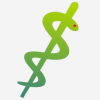I've had this nagging urge to see if I can tease anything out of the exit survival ratios ((resolved - dead) / resolved) of various jurisdictions. It's really tough to compare countries in a meaningful way, but it might be informative to compare US states and protectorates.
So what did I learn? Not much. Perhaps you can see something that I've overlooked. I did notice that the first few nonzero ESR states tend to be heavier in urban black population fractions, and the ones with the best scores are either arid and sparsely populated or humid and tropical. The US Virgin Islands is predominantly black, but scores very well; it's also a great source of UV, seafood, and steep terrain.
Lousiana is a hotbed of obesity, whereas the US Virgin Islands are just the opposite; I've been to both places since 2015, and it's obvious to me that the blacks follow the overall trend in this regard. (Recall that obesity is the top survival determinant in COVID19.) So despite the skew in the data, I don't see any good reason to conclude that being black is a causal source of risk.
The data is from Worldometers as of an hour or so before this post. You can copy and paste it into a CSV in a text editor if you wish to manipulate it with a spreadsheet app. The last column is ESR times 1000, so for instance 901 means 90.1%. It's sorted from worst to best survival. I recommend ignoring the first few entries with 0% ESR, which could simply indicate the lack of any requirement to count survivors.
State,CaseCount,ActiveCases,ResolvedCases,Deaths,ESR
Mississippi,3624,3495,129,129,0
NorthernMarianaIslands,13,11,2,2,0
Oregon,1736,1672,64,64,0
SouthCarolina,3931,3822,109,109,0
Vermont,768,733,35,35,0
Indiana,9542,9051,491,477,28
Louisiana,22532,21326,1206,1156,41
Illinois,25733,24611,1122,1072,44
Georgia,16368,15720,648,617,47
Connecticut,15884,14848,1036,971,62
PuertoRico,1043,983,60,56,66
RhodeIsland,3838,3723,115,105,86
Alabama,4404,4247,157,137,127
Michigan,29263,26727,2536,2093,174
Ohio,8414,7905,509,389,235
NewJersey,75317,70528,4789,3518,265
Wisconsin,3875,3591,284,197,306
Arizona,4234,4014,220,150,318
Idaho,1609,1544,65,41,369
Pennsylvania,27735,26248,1487,837,437
Nebraska,1066,1020,46,24,478
Florida,23340,22028,1312,668,490
Missouri,5178,4826,352,168,522
Colorado,8675,7803,872,374,571
California,28156,25833,2323,973,581
NewYork,226198,186205,39993,16106,597
Maryland,10784,9656,1128,392,652
Kentucky,2429,1994,435,129,703
Washington,11152,8854,2298,583,746
Kansas,1603,1283,320,80,750
Virginia,6889,5730,1159,208,820
NorthCarolina,5608,4577,1031,148,856
Massachusetts,32181,22818,9363,1245,867
NewMexico,1597,1258,339,44,870
WashingtonDC,2350,1717,633,81,872
Delaware,2075,1645,430,52,879
Nevada,3321,2010,1311,142,891
Oklahoma,2357,1071,1286,131,898
Texas,16638,12557,4081,404,901
Utah,2683,2444,239,21,912
Minnesota,1912,798,1114,94,915
WestVirginia,739,579,160,13,918
Alaska,300,181,119,9,924
Maine,796,436,360,27,925
NewHampshire,1211,722,489,34,930
Guam,135,57,78,5,935
Arkansas,1620,1035,585,37,936
Tennessee,6262,3925,2337,141,939
Iowa,2141,1094,1047,60,942
NorthDakota,393,221,172,9,947
Montana,415,190,225,7,968
Hawaii,541,158,383,9,976
UnitedStatesVirginIslands,51,4,47,1,978
SouthDakota,1311,931,380,7,981
Wyoming,401,223,178,2,988
Edited by resveratrol_guy, 17 April 2020 - 12:48 PM.































 This topic is locked
This topic is locked



















